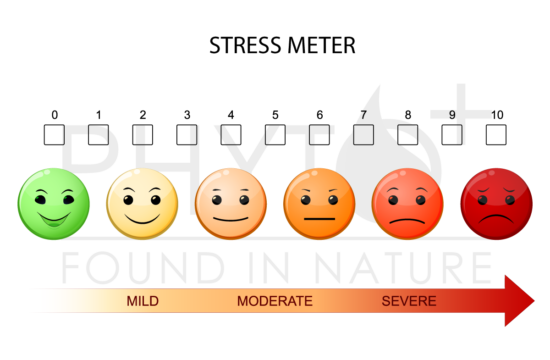After two weeks of wrangling over everything from African elephants to tiny glass frogs, from cute otters to tasty sharks, CITES has ended with divisions over how to protect endangered species as entrenched as ever.
Read more: Killing endangered species to save them? Trophy hunters lobby at CITES
Africa has a deep geographical rift over how states should manage their wildlife populations.
On one side, Zimbabwe, South Africa, Namibia and Zambia and the other nations of the South African Development Coalition (SADC) argued they should be allowed to export giraffe body parts and sell off their ivory stockpiles to fund conservation.
Read more: Giraffes move closer to endangered species protection
The 32 — mainly eastern and western — countries of the African Elephant Coalition (AEC), led by states like Kenya, countered that even a limited legal trade fuels poaching across the continent, and makes it more difficult for them to protect their own wildlife populations. Instead, they advocate ecotourism to generate revenue from wildlife.
“In our country, for instance, elephants — and wildlife for that matter — form the bedrock of our tourism industry,” Joseph Boinnet, chief administrative secretary of Kenya’s tourism and wildlife ministry and head of Kenya’s negotiating team at CITES, told DW.
The majority of the 183 (182 countries, plus the European Union) signatories to CITES, a treaty that governs trade in plants and animals, came down on the side of AEC, much to the anger of southern African countries.
Read more: CITES: Elephant ivory ban upheld, but legal loopholes remain
“If you look at the African coalition, there are countries there that have zero elephants and they have come to the stage and they preach to the world that they have done better than us?” Munesu Munodawafa, head of the Zimabawean delegation, told DW.

Southern African countries have argued the should be able to sell stockpiled ivory to fund conservation. In the past, stockpiles have been burned to take them out of the market
He added the SADC should be celebrated for its conservation successes, given the countries in the group are home to the vast majority of the continent’s elephants.
Ahead of the conference, some SADC countries threatened to pull out of CITES if their proposals were turned down. As the conference drew to a close, Munodawafa didn’t rule it out, saying CITES was the only “international institution that celebrates mediocrity.” But he added that Zimbabwe wanted to work with international community to find a better outcome.
Any country not signed up to the treaty would find it difficult to trade in any of the more than 3,500 CITES-listed species. When it comes to trading wildlife, CITES is basically the only game in town.
Protecting cuddly critters from Insta mob
This year, CITES also decided to restrict trade in 18 species that have become popular as exotic pets, with conservationists welcoming the convention waking up to growth of the multi-billion dollar black market.
“It’s really a very clear referendum on exotic pets and whether they should be traded,” said Cassandra Koenen, an expert in exotic pets at World Animal Protection.
Social media is helping drive growth in the sector by making it easier for sellers to connect with buyers around the world. A recent DW investigation showed reptiles, some of them CITES-listed, for sale in closed Facebook groups.
But social media is fueling the wildlife trade on other ways, too.
Likeable posts depicting otters as cuddly, instagrammable pets sparked an otter craze in Japan and Indonesia. Otter cafes have even sprung up in Japan, where visitors can snap a selfie with the cute critters.
Otters, though, need specific care and nutrition, and can bite and be destructive, and poaching to supply the craze has led to a marked decline in their numbers.
“It’s really a false narrative and a death sentence for these otters,” said Koenen. “It’s improper nutrition, improper environment. And really is a like on your instagram worth the life of an otter?”
CITES responded to the craze with a complete ban on the trade in small-clawed and smooth-coated otters.
The EU argued that regulating the trade in tiny glass frogs from Central America just wasn’t feasible
One popular exotic pet that didn’t make it onto the CITES list was the glass frog. The tiny, sometimes transparent, amphibian is imported to the United States mainly from Panama, Costa Rica and Suriname.
But the majority of CITES states decided against the listing, with the EU arguing it wasn’t enforceable.
Under the sea and under protection
They may not know it, but sharks and rays had a big conference, with protection boosted for 18 threatened species.
Read More: Countries vote to protect endangered mako sharks
Wedgefishes, guitarfishes and mako sharks made an appearance on the CITES list for the first time, as the appetite for their meat and shark fin soup have seen their numbers nose-dive.
Populations of mako sharks, the world’s fastest shark species, are under intense pressure in the Indian Ocean, as well as the Mediterranean, the Atlantic and the North Pacific.
“They take some time to mature and they don’t lay lots of eggs like bony fish,” said Jen Sawada, who directs Pew Charitable Trusts shark conservation. “So they don’t have the biological capability of recovery under heavy fishing.”
Up to 270 million sharks are killed in commercial fisheries each year, according to Pew Trust estimates. The CITES listing means the species can no longer be traded without evidence that fishing won’t be hurt its chances of survival.
China — where shark fin soup is a delicacy — Japan, Malaysia and New Zealand were among those opposing increased protection, saying it wasn’t clear fishing was behind the decline in shark numbers.
Japan said it was highly dependent on marine fisheries, which it used sustainably without CITES listings. At the conference, it was among those accusing CITES of mission creep from broadening its remit to include marine species as well as those on land.
Read more: Is the 2020 Olympics an opportunity for Japan to tackle seafood sustainability?
Tensions at the heart of the treaty
The decision on sharks reflected a general trend at this year’s conference toward increased protection. That led to accusations of “political decisions” being made without evidence of species in decline.
“CITES is no longer a science-based institution,” said Munodawafa, head of the Zimbabwean delegation. Those on the other side of the debate leveled the same charge, arguing that those pushing for fewer trade restrictions were ignoring the science.
Matt Collis, policy director at the International Fund for Animal Welfare (IFAW) said that ultimately, the tension at the heart of CITES is over whether it is a trade agreement or a conservation agreement.
“There are these tensions in CITES of the contradictory approaches,” he told DW. “Some of those want to use and trade in wildlife and others want to see it protected. Some of these issues are really emblematic of that.”














